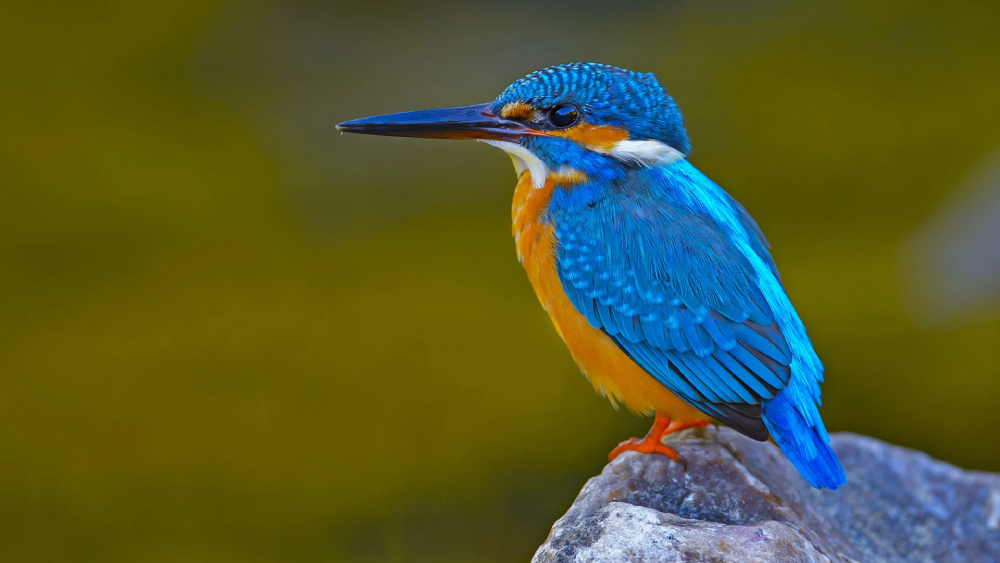In the vibrant tapestry of Earth’s biodiversity, few creatures capture the imagination quite like the kingfisher. With its dazzling plumage, exceptional hunting prowess, and widespread presence across the globe, the kingfisher stands as a symbol of nature’s beauty and ingenuity. From ancient folklore to modern scientific fascination, this charismatic bird has earned a special place in cultures and ecosystems worldwide.
Introduction to the Kingfisher
Kingfishers belong to the family Alcedinidae, comprising over 90 species distributed across various continents except Antarctica. Their diverse range spans from the lush rainforests of South America to the frozen rivers of Alaska, reflecting their remarkable adaptability to different environments. Despite the name, not all kingfishers exclusively feed on fish; their diet may include insects, crustaceans, amphibians, and even small mammals.
Physical Characteristics
One cannot discuss kingfishers without marveling at their striking appearance. Most species boast vivid colors ranging from azure blues and emerald greens to fiery oranges and deep reds. These hues are not merely for aesthetics but serve as effective camouflage in their habitats, whether amidst dense foliage or along riverbanks.
Their compact bodies, streamlined for swift flight, are complemented by long, sharp bills ideal for catching prey. Kingfishers possess exceptional vision, allowing them to spot their quarry with remarkable precision even underwater. Moreover, their short legs are adapted for perching on branches or hovering above water as they hunt, showcasing their evolutionary adaptations to diverse hunting strategies.

Habitat and Distribution
Kingfishers occupy a diverse array of habitats, including rivers, lakes, estuaries, mangroves, and forests. While some species are strictly associated with freshwater environments, others thrive along coastal regions or in dense woodlands. This versatility in habitat preference underscores their adaptability and resilience in various ecosystems.
Their global distribution reflects the evolutionary success of the kingfisher family. From the iconic Common Kingfisher (Alcedo atthis) found throughout Europe and Asia to the vibrant American Pygmy Kingfisher (Chloroceryle aenea) inhabiting Central and South America, these birds have carved out niches in ecosystems worldwide.
Behavior and Feeding Habits
Kingfishers are renowned for their remarkable hunting techniques, which vary among species. While some, like the iconic diving kingfishers, plunge headfirst into water to catch fish, others prefer to hover above the surface before swooping down to snatch their prey. Their lightning-fast strikes, aided by specialized bill structures, ensure a high success rate in capturing food.
Despite their carnivorous diet, kingfishers play essential roles in maintaining ecological balance. By controlling populations of small fish and aquatic invertebrates, they help regulate food webs within their habitats. Additionally, their nesting behaviors contribute to soil aeration and nutrient cycling, further enriching ecosystems.
Cultural Significance
Throughout history, kingfishers have captivated human imagination, inspiring myths, legends, and artistic representations. The kingfisher was associated with the goddess Halcyon, in ancient Greek mythology, symbolizing tranquility and prosperity. In Asian cultures, including Japanese and Chinese folklore, kingfishers are revered as symbols of beauty, good luck, and fidelity.
In art and literature, kingfishers have been celebrated for their vibrant plumage and graceful demeanor. From the intricate illustrations of John Gould to the poetic verses of Gerard Manley Hopkins, these birds have left an indelible mark on human creativity and expression.
Conservation Challenges
Despite their cultural significance and ecological importance, kingfishers face various threats to their survival. Habitat loss, pollution, climate change, and unsustainable fishing practices pose significant risks to populations worldwide. Wetland degradation, in particular, has led to declines in many species reliant on freshwater habitats.
Conservation efforts aimed at protecting kingfishers and their habitats are thus crucial for their long-term survival. Initiatives such as habitat restoration, pollution control, and sustainable fisheries management can help mitigate the impact of human activities on these charismatic birds.
Conclusion
In conclusion, the kingfisher stands as a testament to nature’s brilliance and resilience. With their vibrant colors, exceptional hunting skills, and cultural significance, these birds enrich ecosystems and inspire admiration worldwide. So, by understanding and appreciating the importance of kingfishers, we can work towards ensuring their conservation for future generations to cherish and enjoy.









